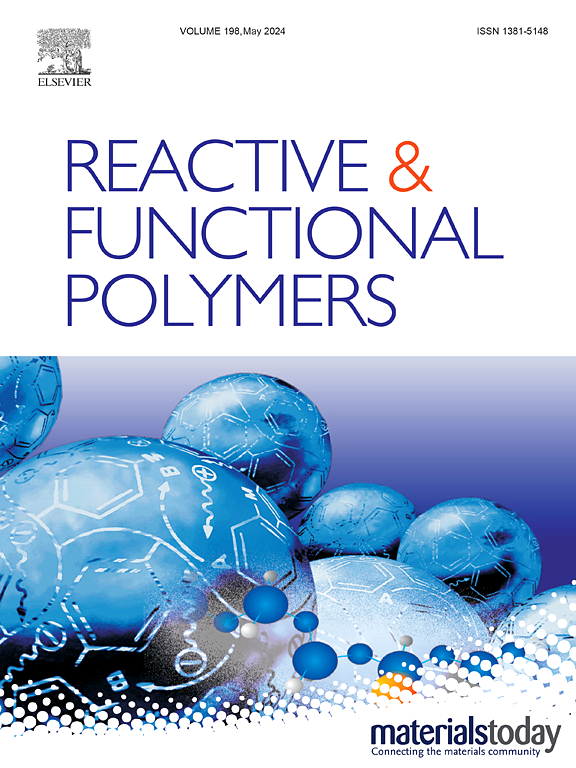Preparation of new hybrid materials based on polymeric membranes and polarized electrodes for Cu2+ and Pb2+ photo reduction
IF 4.5
3区 工程技术
Q1 CHEMISTRY, APPLIED
引用次数: 0
Abstract
A new system combining ionic membranes–semiconductors is studied for the photo-reduction of metallic ions M2+ (Pb2+ and Cu2+) from water. For this purpose, a novel class of cellulose triacetate (CTA) membranes was developed; they were modified by polyanethol-sulfonic acid (PATSA), polyethylene glycol (PEG), polyethylenimine (PEI), polyvinyl pyrrolidone (PVP) incorporation that are selectively permeable to metallic ions. The synthesized membranes were plasticized by nitro-phenyl pentyl ether (NPPE) to improve the physical and mechanical properties. The elaborated membranes were characterized by thermal analysis (TGA), FTIR spectroscopy and Scanning Electron Microscopy (SEM). In parallel, two semi-conductors namely p-CuO and n-ZnO were prepared by precipitation in alkaline medium and characterized physically and electrochemically. The optical gaps of CuO (1.30 eV) and ZnO (3.25 eV) were obtained from the diffuse reflectance. The activation energies were deduced from the slope of the plots log (conductivity) vs. 1000/T. The electrochemical characterization was undertaken to establish the energy diagram of the system “p-CuO / water / M2+ electrolyte membranes/ water/ n-ZnO”, a preamble of the M2+ photo-electrodeposition. The conduction band of CuO (−0.11 VSCE) is cathodic enough for the reduction of metal ions. As application the photo-electro-dialysis was successfully exploited to reduce the cations M2+ (Pb2+, Cu2+) under visible light. The results indicated that the combined system enhances considerably the electrons transfer and the diffusion flux of M2+ ions, thus giving appreciable percentages of M2+ reduction to elemental state. Abatements of 82 and 25 % were reached respectively for Pb2+ and Cu2+ upon visible light irradiation.

求助全文
约1分钟内获得全文
求助全文
来源期刊

Reactive & Functional Polymers
工程技术-高分子科学
CiteScore
8.90
自引率
5.90%
发文量
259
审稿时长
27 days
期刊介绍:
Reactive & Functional Polymers provides a forum to disseminate original ideas, concepts and developments in the science and technology of polymers with functional groups, which impart specific chemical reactivity or physical, chemical, structural, biological, and pharmacological functionality. The scope covers organic polymers, acting for instance as reagents, catalysts, templates, ion-exchangers, selective sorbents, chelating or antimicrobial agents, drug carriers, sensors, membranes, and hydrogels. This also includes reactive cross-linkable prepolymers and high-performance thermosetting polymers, natural or degradable polymers, conducting polymers, and porous polymers.
Original research articles must contain thorough molecular and material characterization data on synthesis of the above polymers in combination with their applications. Applications include but are not limited to catalysis, water or effluent treatment, separations and recovery, electronics and information storage, energy conversion, encapsulation, or adhesion.
 求助内容:
求助内容: 应助结果提醒方式:
应助结果提醒方式:


